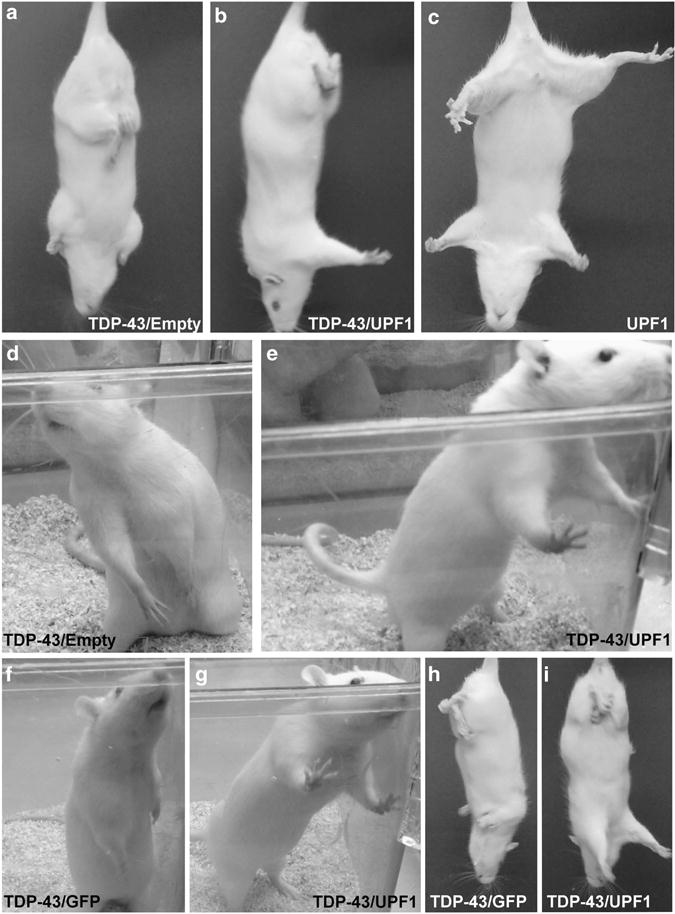Figure 4.

Human UPF1 protects rats from forelimb impairments induced by human TDP-43 expression. Limb impairments were assessed by assays of the escape reflex and by observing rearing behavior in home cages. (a–c) Rats injected with AAV9 TDP-43 show clasping of their hindlimbs, whereas rats injected with AAV9 mycUPF1 alone show a normal escape reflex. When AAV9 TDP-43 was coinjected with AAV9 empty vector, the rats show clasping of both hindlimbs and forelimbs (a). However, when AAV9 TDP-43 was coinjected with AAV9 mycUPF1, normal forelimb extension was maintained in the escape reflex (b). (d) Rats injected with AAV9 TDP-43 and AAV9 empty vector showed abnormal rearing with both forelimbs lowered. (e) The TDP-43/mycUPF1 group manifested normal rearing posture with both forelimbs extended. (f–i) Separate groups were analyzed in parallel with an AAV9 GFP control. When TDP-43 was coexpressed with GFP, the rats showed abnormal rearing posture with both forelimbs lowered (f) and clasping of both hind- and forelimbs in the escape reflex (h). TDP-43/mycUPF1 rats displayed normal forelimb function (g and i). (a–e) Interval 12 weeks; (f–i) interval 8 weeks.
